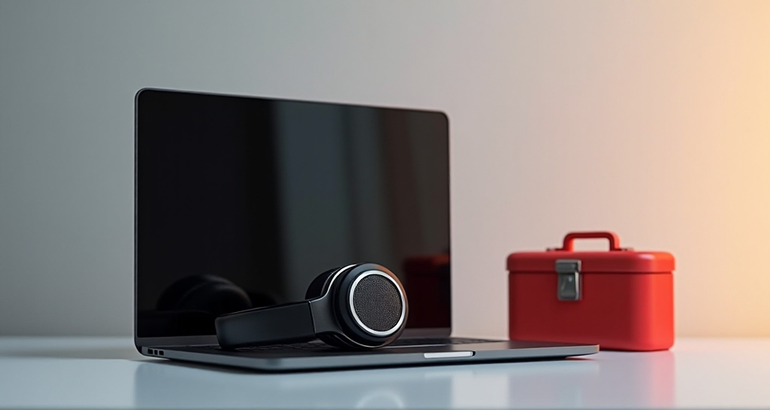NFC Security: How to Protect Your Near Field Communication Data?

- Privacy
- Tips





Contents
Preventive Measures for NFC Security Risks
What is NFC?
NFC (Near Field Communication) is a short-range wireless communication technology that enables data transfer between two devices within a few centimeters of distance. NFC works by utilizing electromagnetic induction, creating a shared electromagnetic field when two devices come close, facilitating data exchange. NFC can be categorized into active and passive modes. In active mode, both devices have their power sources and transmitters, enabling mutual data transmission. In passive mode, only one device has a power source and transmitter, while the other has a receiver, allowing data reception but not transmission. Passive mode devices are often tags or cards that do not require batteries and can be used for an extended period.
Advantages of NFC
① Convenience
NFC simplifies processes such as payments and authentication, requiring devices to be brought close to target devices or tags to complete transactions or verifications, eliminating the need for passwords or QR code scanning.
② Versatility
NFC serves multiple functions beyond payments and authentication, including file transfer, contact sharing, app launching, Bluetooth pairing, enhancing user convenience and experience.
③ High Security
Due to its short range, NFC is difficult to eavesdrop on remotely, and it can be coupled with password or biometric authentication for added security. Additionally, NFC can serve as a physical security measure, such as requiring users to tap their phones near access control systems to gain entry.
Disadvantages of NFC
① High Costs
NFC requires specialized chips and antennas to be installed on devices, increasing device costs and weight. Additionally, NFC tags or cards also require purchase and maintenance, contributing to user expenses.
② Compatibility Issues
NFC currently lacks a unified standard and protocol, leading to potential incompatibility or lack of interoperability between NFC devices from different manufacturers or regions. For instance, a UnionPay card used in mainland China might not work in Hong Kong or Taiwan.
③ Limited Range
Due to its short range, NFC requires devices to be brought close to target devices or tags for data exchange, limiting user freedom and flexibility. Additionally, in crowded or signal-interference areas, NFC might not function properly.
Security Risks of NFC
① Data Tampering
Attackers can modify or replace data on NFC tags or cards to deceive users or target devices. For example, placing fake payment tags in a store to trick users into paying the attacker.
② Eavesdropping
Attackers can use specialized devices to listen in on or intercept NFC data transmission, gaining access to sensitive user information. For instance, attackers could steal credit card information when users make NFC payments in public places.
③ Relay Attacks
Attackers can use two devices to relay NFC data transmission between a user and a target device, achieving remote deception. For example, using a user's smartphone for contactless payments without the user's knowledge.
④ Replay Attacks
Attackers can record and replicate NFC data transmission to reuse or forge user identities or transactions. For instance, using the same data to make another payment after a user completes a transaction.
⑤ Cloning
Attackers can copy data from NFC tags or cards to create counterfeit tags or cards. For example, cloning and using a user's NFC card if lost or forgotten.
⑥ Social Engineering
Attackers can induce or deceive users into actively using or providing NFC devices or information. For example, instructing users to tap their phones near a specific tag or device upon receiving a text message or call.
⑦ Skimming
Attackers can swipe their NFC device or tag over a user's NFC device or tag without their knowledge, engaging in unauthorized transactions or verifications. For example, swiping their phone over a user's phone during a payment.
⑧ Malware
Attackers can implant malicious software to control or disrupt a user's NFC device or functionality. For example, downloading an app that contains malware capable of reading or modifying NFC data.
Preventive Measures for NFC Security Risks
To prevent NFC misuse, users should adopt several preventive measures:
① Secure Device Storage
Avoid lending your NFC device to others or leaving it in unsafe places.
② Enable Two-Factor Authentication
For instance, require a password or fingerprint input in addition to NFC for payments.
③ Set Payment Limits
For example, set maximum payment amounts per transaction or per day in device settings.
④ Implement Digital Protection Measures
Use tools like MetroVPN to encrypt and safeguard your online network security.
⑤ Disable Unused NFC Features
Turn off the NFC switch on your phone when not in use.
⑥ Inspect NFC Tags or Cards
Refrain from scanning or using tags or cards from unknown sources or that seem suspicious.
⑦ Be Aware of Surroundings
Avoid using NFC in crowded or signal-interference areas.
⑧ Install Security Software
For example, install antivirus software on your phone.






